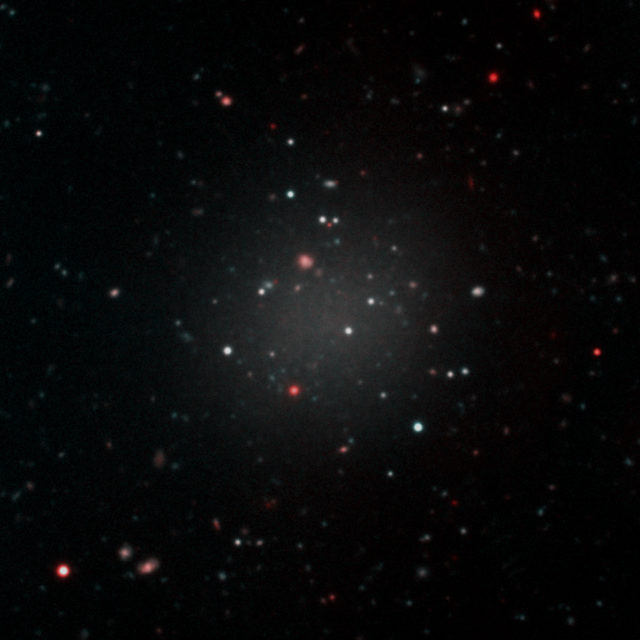By Eddie Trower-
A ghost galaxy far away has baffled astronomers because it contains almost no dark matter, making it one of the strangest objects in the universe.
The mysterious substance, which exerts a strong gravitational influence, dominates galaxies including our own Milky Way is believed to be essential to galaxy formation. Blobs of dark matter were understood
“If there is any dark matter at all, it’s very little,” said Prof van Dokkum. “The stars in the galaxy can account for all of the mass, and there doesn’t seem to be any room for dark matter.”
Describing DF2 as “astonishing”, he said the galaxy was so sparse it was possible to see right through it.
He spent an hour “just staring” at an image of the object from the Hubble Space Telescope which showed “a gigantic blob that you can look through”. All the galaxies behind DF2 were visible.
The discovery is reported in the journal Nature. Scientists are now trying to come up with a viable explanation for the galaxy’s lack of dark matter.
Some scientists believe that DF2 sits in a collection of galaxies dominated by a giant elliptical galaxy, NGC 1052. The turbulent birth of NGC 1052 billions of years ago may have played a role in DF2’s dark matter deficiency, astronomers believe. Others believe it may be a reflection of some cataclysmic event within DF2 which swept out all of its gas and dark matter, halting star formation
GHOST GALAXY PUZZLE
With virtually no dark matter, scientists are puzzled as to how the newly identified “ghost” galaxy was created.
Lead scientist Professor Pieter van Dokkum, from Yale University in the U.S, said: “There is no theory that predicted these types of galaxies. The galaxy is a complete mystery, as everything about it is strange. How you actually go about forming one of these things is completely unknown.”
NGC1052-DF2, or “DF2” for short, is 65 million light years away and one of a newly recognised family of “ultra-diffuse” galaxies.
They are thought of as “ghostly” because they contain so few stars, making them very faint despite their large size.
DF2 is about the same size as the Milky Way but contains 200 times fewer stars, as well as almost no dark matter.
The bizarre object was first spotted by astronomers using the Dragonfly Telephoto Array, a special 48-lens telescope in New Mexico, US, designed to find ultra-diffuse galaxies.
Subsequent observations revealed a number of unusual characteristics. Unlike typical spiral galaxies, DF2 had no dense central region, and lacked spiral arms or a disc. And unlike elliptical galaxies it had no central black hole.




